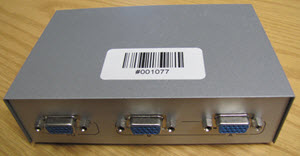
|
Industrial Work-in-Process Tracking Software |

|

In a work-in-progress tracking application, LPMTS is typically used to track the assembly, repair, and testing of serial numbered items, each of which has a unique license-plate tracking barcode attached to it.
Alternately, LPMTS can also be used to track containers of material, which have a unique license-plate tracking barcode attached.
Each of the work-center locations at which operations are to be performed are then named after the operations that take place at those locations, such as "Cutting", "Milling", "Final Test", "Packing" and "Shipping".
When an item or container of materials is first entered into BellHawk, it can be associated with a customer or work order.
Then, as it moves from operation to operation a BellHawk move transaction can be used to record the movement of the item or container to each operation by scanning its license-plate tracking barcode and selecting or scanning the new location/operation.
Finally a simple Ship transaction can be used to record the shipment of the item or container of material to the customer, again by scanning its license-plate tracking barcode.
This provides users of BellHawk a real-time view of the status of customer orders and the materials associated with each of those customer orders.
This is the simplest method of tracking work-in-process as it only requires a single scan of the license plate tracking barcode on each assembly or item as it progresses from operation to operation. But it also provides the least information about the operational performance.
For those situations where more data is required, then it is recommended that clients use the BellHawk WIPS system, where labor tracking is required, or the BellHawk RTOPS system, where materials traceability and job costing data is required.